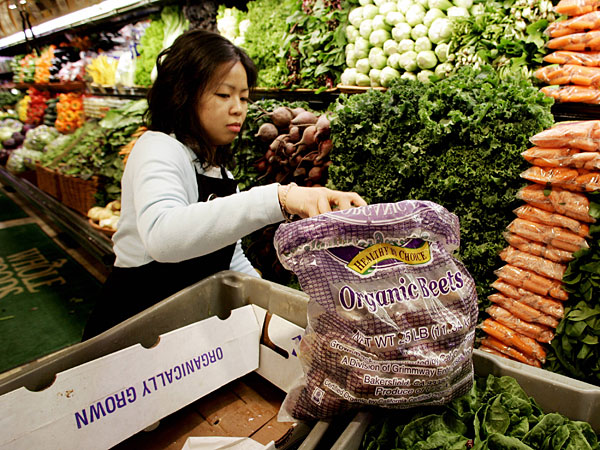
As a result of the Child Nutrition Act of 2004, the United States Congress formed a new requirement that public and nonpublic schools must develop new wellness policies that promote nutrition starting in the academic year of 2006-2007. Because of this new law, South Dakota was forced to re-write their nutritional standards that were present in schools up until this point. Below are the new standards that relate to food served in the cafeteria.
Standards for Food and Beverages1. Beverages:a. Provide 100% fruit and vegetable juices and limit portion sizes to 4-12 ounces.
b. Provide water - non-carbonated and unflavored without added sugar, artificial sweeteners, or caffeine.
c. Provide milk-skim or 1% in portion sizes of 8-16 ounces.
d. Flavored milk (chocolate or strawberry), low fat, or skim may be offered in up to 12 ounce serving sizes with no more than 36 grams of sugar in a 12 ounce portion.
e. Eliminate the sale of soft drinks, sports drinks, punch, fruit drinks, iced tea, coffee and coffee-like beverages, and other items not included in allowable beverages listed above.
f. Allow only water as a beverage in the classroom.
2. Grains:a. Serve whole grains which contain at least 2 grams of fiber per 1 ounce serving. One half of all grains served should be whole grain.
b. Limit portion sizes to 1.25 ounces - 2 ounces with most being 1.25 ounces.
c. Limit total calories from fat to no more than 30%.
d. Limit total calories from saturated fat to no more than 10%.
e. Limit sugar content to no more than 35% of calories by weight, or less than 6 grams from sugar per serving.
f. Limit the amount of trans fats.
3. Fruits and Vegetables:a. Offer fruits and vegetables prepared/packaged without added fat, sugar, or sodium. Low-fat dips and sauces on the side may be served in small portions to make foods more appealing.
b. Offer ½ cup serving sizes of fruits and vegetables. Offer additional fruits and vegetables to help students reach the recommended 5 - 9 servings per day.
c. Offer a variety of fruits and vegetables, especially colorful ones.
4. A la carte entrees and side dishes:a. Offer meat/meat substitutes in portions no greater than 3 ounces with 5 grams of fat per ounce or less (except nut butters).
b. Offer nuts and seeds in portion sizes no greater than 1.25 ounces.
c. Offer nut butters in portion sizes of 2 - 4 Tbsp.
d. Offer non-fat and low-fat yogurt in portion sizes of 8 ounces or less. Sugar should not be the first ingredient on the label.
e. Limit ice cream and frozen desserts to portion sizes of 4 ounces or less with 5 grams or less of fat. Sugar should not be the first ingredient.
f. Offer cheese in portion sizes of 1- 2 ounces.
5. Condiments and miscellaneous:a. Offer salad dressing containing no more than 6 - 12 grams of fat per ounce.
b. Remove salt shakers from tables.
If these standards are truly being implemented in all South Dakota schools, then why are the Aberdeen lunch menus so full of innutritious foods? Perhaps the regulations are already in place to encourage a healthy environment for students in South Dakota, but the problem is they are not being enforced.
Not stated in the above regulations is how many of these foods need to be present in every single meal. For instance is it a requirement for the cafeteria to serve fruit and vegetables everyday? Also, are students required to place an item from each food group on their lunch tray, or can they walk out the door with a slice of pizza and nothing else?
Link to full wellness policy document: http://doe.sd.gov/oess/cans/docs/Wellness_Policy.pdf



















